The railway between Aberdeen and Inverness that we are familiar with today was largely completed in 1856. The Great North of Scotland Railway (GNoSR) worked westwards out of Aberdeen, and what was to become the Highland Railway (HR) was constructed eastwards from Inverness. The two companies met basically halfway at Keith.
Today, the influence of both companies is still evident. However, all the remaining operational signal boxes (SBs) are located on the GNoSR section. Fortunately, the station at Nairn has Category B-listed status, and this includes the former HR Nairn and Nairn West SBs.
The Waterloo terminus at Aberdeen was an early casualty, closing to passengers when the Aberdeen Joint Station opened in 1867. The Joint Station was shared by the GNoSR and the Caledonian Railway (CR). As well as facilitating easier interchange for through passengers, it was better located.
Interestingly, 150 years later, the GNoSR terminus at Waterloo remains in use as a freight facility. Similarly, the CR Guild Street station continued in use until 2007, when a replacement freight facility was set up at Raiths Farm. The vacated site forms the basis of the Union Square Centre.
Although earlier plans envisaged double track in places, the original route between Aberdeen and Inverness was single throughout with passing loops. Widening began with the section between Kittybrewster and Dyce in 1861. This coincided with the development of the routes to Peterhead (1862) and Fraserburgh (1865), which diverged from the main line at Dyce.
Doubling of the track in the west was limited. In 1863, the track at Forres was realigned and the station moved eastwards. This was associated with the opening of a line between Inverness and Perth that diverged from the Aberdeen line at Forres. The plan was to double the route between Inverness and Forres, but in the end only the seven miles between Inverness and Dalcross was tackled. Despite the opening of the line to Perth, traffic levels didn’t justify it!
At the Aberdeen end, the short section between Aberdeen and Kittybrewster was double from when Aberdeen Joint Station opened in 1867. The remainder of the route to Keith was tackled piecemeal. Beyond Dyce, the work recommenced in 1880 with the section to Kintore, and widening continued westward in stages until, in 1898, 53 miles of double track were in place between Aberdeen and Keith.
During this period, the Aberdeen Joint Station was a simple affair. There were four through lines, but only one through passenger platform. Rebuilding between 1913 and 1915 created four through platforms. The number of north end bays was increased from two to four.
Fast forwarding to 1960, we can inspect the infrastructure before the wholesale closures and rationalisations associated with the period.
The direct line between Aberdeen and Inverness had 30 intermediate stations, many of them junctions. The ‘Beeching Report’ suggested only five would be reprieved, with Huntly the first stop after leaving Aberdeen. In the end, following the ‘rash’ of closures between 1964 and 1968, seven stations remained open to passengers. Inverurie and Insch were reprieved, but Dyce succumbed!
Even though passenger services through Buchan were withdrawn in 1965, Dyce remined a junction for freight services to Fraserburgh until 1979.
At Keith Junction, it was still possible to reach Elgin by two different routes. The longer, scenic route through Dufftown and Craigellachie succumbed in 1968.
Indeed, passengers from Aberdeen could reach Elgin three ways! There was another route via Portsoy and Cullen, which diverged from the main line at Cairnie Junction. This also closed in 1968.
Even in 1960, many of the branch lines had been reduced to freight lines, and most closed in 1966. These included Kintore-Alford, Inverurie-Old Meldrum, Inveramsey-Turriff, Keith-Aultmore, and Orbliston-Fochabers. Today, the only real branch associated with the Aberdeen-Inverness line is that from Kittybrewster to Waterloo, which conveys chalk slurry.
At Keith, a short stub serving the former Dufftown platform is all that remains of the former Speyside Line via Craigellachie. Although devoid of passenger services, freight continued to run to Dufftown until 1983, after which the route was used by charter trains visiting the distilleries.
In 1991, BR decided maintenance costs were too high and most of the line closed completely. The present position dates from 1995, and less than half a mile remains in use. Any trains using this platform must be in possession of the wooden Train Staff issued at Keith Junction SB. Although now physically separated from NR, there is a hope that the connection with the preserved Keith & Dufftown Railway will be renewed.
Along with the reduction in the rail network and facilities, the number of SBs was also steadily reduced. In 1960, there were 40 on the Aberdeen to Inverness main line. The wholesale rationalisation largely started in the mid-1960s.
At Keith, although the line was single through the station, a short double line existed where the branch to Aultmore diverged. This section was rationalised when the branch and the controlling SBs (Keith East and Keith West) closed in 1966. Movements along this stretch were, unusually, controlled by telephone.
In 1970, following the singling of the line between Huntly and Keith, a loop was installed to the east of Keith Junction SB and two east-facing bay platforms removed. To this day, the one through station platform is located on the single-line section. Although not yet planned, the desire to build a second platform is linked to the aspiration for a one-hour frequency between Aberdeen and Inverness.
In the 1960s, Elgin remained an important route centre and Elgin Centre SB held a pivotal role. Until 1966, three passenger lines joined the main line at this location. By 1968 all these branches were history, although Elgin Centre SB continued to control the junction for the freight sidings. This arrangement prolonged the life of the Absolute Block (AB) double-track section through the station to Elgin West. In 1973, this was replaced by a passing loop controlled from Elgin West SB. Elgin Centre SB was converted to an unmanned ground frame.
Forres is another (forgotten) important junction. Before the closure of the line to Boat of Garten in 1965, there had been a triangular layout. On the side serving the Aberdeen-Inverness line, the double-track AB section was controlled by Forres East and Forres West SBs.
Then, in 1967, Forres West SB was abolished and the route through the station singled. Forres East SB was retained, to control the new passing loop provided to the east of the station and to supervise two level crossings. This arrangement broadly lasted for 50 years.
A further 1967 casualty was the removal of the seven-mile double-track section between Dalcross and Inverness. Dalcross SB closed, and the section extended from Nair to Millburn Junction (Inverness).
By 1967, besides the short double-track section at Elgin, the 53-mile route between Keith and Inverness was divided into just four single-line Key Token (KT) sections. Following the closure of Elgin Centre SB in 1973, Tokenless Block (TB) replaced KT between Keith Junction and Elgin West. This left three KT sections: Elgin West-Forres; Forres-Nairn; and Nairn-Millburn Junction.
In 1987, as part of the Inverness resignalling, KT working between Nairn and Millburn Junction SB was replaced by Track Circuit Block (TCB). Five SBs were abolished, including Milburn Junction.
Indeed, Milburn Junction itself disappeared, and the single line from Aberdeen now joins the main line closer to Inverness at Welsh’s Bridge. This left two KT sections, and they remained in use until last October. The plans to introduce TB or Radio Electronic Token Block (RETB) came to naught.
Between Aberdeen and Keith, singling took place between 1969 and 1971. Besides the passing loops at Dyce, Inverurie, Huntly and Keith, only the five-mile section between Insch and Kennethmont remained double-track. Something not common on BR at the time, most loops were made bi-directional. In the case of Inverurie and Huntly, unless trains are passing, it is usual to use the Down side for all trains. This is the most convenient one for both towns.
The SBs at Kittybrewster, Bucksburn, Port Elphinstone, Oyne, Gartly and Huntly (station) were all abolished during this work. At Huntly, the SB we are familiar with today is the former gate box. Ironically, the level crossing was closed in 1979. Amalgamation schemes at Elgin and Forres followed a similar pattern.
In 1971, BR turned its attention on Aberdeen. Sadly, the major track improvements provided at the Joint Station between 1913 and 1915 were all but taken away. Following the mass withdrawal of most passenger services in the north, it wasn’t possible to justify the infrastructure. All four north end bay platforms (Nos 10-13) were taken away.
At the same time, changes were made to the four through platforms (Nos 6-9). Platform 6 became the main platform for Inverness line services. A buffer stop was placed at the north end of Platform 7, and the connection towards Inverness removed. Platform 8 and 9 remained in use, primarily as goods lines.
These drastic changes resulted in Aberdeen North SB having its 115-lever frame removed. It was replaced by 20 levers, of which only 14 were used - a sad decline for what had been the largest GNoSR SB. For the time being, Aberdeen South, Centre and North SBs remained in use. The Centre SB, located midway along the long through platforms, formerly was responsible for the scissors crossings.
In 1981, the simplification carried out ten years earlier was taken a stage further. The Aberdeen resignalling resulted in all the semaphore signals being replaced by colour lights controlled from an N-X panel in the new Power Signal Box (PSB). The SBs at Craiginches South, Craiginches North, Ferryhill, Aberdeen South, Aberdeen Centre and Aberdeen North all closed.
Dyce became a fringe SB to Aberdeen PSB. Dyce station had closed in 1968 and the connection to the Fraserburgh line removed, but the semaphores were still in use.
It wasn’t until 2007 that major changes occurred. The track layout was improved, Raiths Farm yard and SB were opened, all semaphores were replaced by colour lights, and the SB lever frame was replaced by a panel.
Today, Dyce remains a tall, impressive SB located at the former junction with the Fraserburgh line. Somewhat ironically, it dates from when the line between Dyce and Kintore was doubled in 1880 and is scheduled to be abolished when the redoubling between Kittybrewster and Inverurie is completed in 2019.
TCB working on the single line between Aberdeen and Dyce dates from 1971. Between Dyce and Insch and Kennethmont and Keith, Tokenless Block (TB) was installed on the recently singled lines, and this was extended in 1973 to include the section between Keith and Elgin.
To be precise, Scottish Region Tokenless Block is in use. Any operator north of the border will politely tell you the Scottish Region variation is superior to any others!
In Scotland, TB was first applied to the short single line between Usan and Montrose South in 1965. Today, it is also found on the Highland Main Line single-track sections between Stanley Junction (Perth) and Kingussie. The basic principle still applies, but the TB instruments have evolved - the diagram (see xx) shows the Mk 4 variation found at Huntly.
Looking at the case of Huntly, we see the twin instruments controlling the single line to Keith (on the left) and Kennethmont. The left-hand instrument for the section to Keith shows the instrument set up for a train going towards Aberdeen. Note the illuminated ‘Train Coming From’ light (red). Prior to this, the Huntly signaller would have acknowledged ‘Is Line Clear’ from Keith SB and reversed the Acceptance Switch. For the section to Kennethmont, no train has been accepted in either direction. As such, the Normal Indicator is illuminated, and the Acceptance Switch is pointing to Normal.
On the former HR section, the signalling arrangements at Mulben, Orbliston, Kinloss, Brodie and Nairn were particularly interesting. It seems the HR built lengthy platforms to accommodate long summer trains. For this, they developed a method of working at passing loops which frequently required three SBs. Those located at either end of the station essentially acted as ground frames, whereas the one located in the station booking office contained the instruments. This elaborate arrangement was required because when the system was installed, the Board of Trade wouldn’t allow a SB to control (hand-worked) facing points more than 180 yards away.
This arrangement was not found on the former GNoSR section between Aberdeen and Keith. Although the loops were frequently very long, SBs were established at either end. In this case, one SB contained the instruments and the other was basically a ground frame.
This practice disappeared on the Aberdeen-Keith section when the GNoSR doubled the line to Keith. For example, at Insch, Insch South SB opened when the loop was extended but closed when the line was doubled. The present Insch SB is the former Insch North.
The former HR arrangement requiring three SBs continued in use at Nairn until 2000. An anachronism it may have been, but what a joy to behold - those who saw the signaller cycling to and fro will not easily forget it. It was a method of operation designed to keep signalmen fit. I suppose the HR could have made matters even worse by placing the SBs at either end of the station on different platforms!
Although a bicycle was desirable to minimise delays, BR didn’t provide one until 1955. Clearly, activity was most frenetic when trains passed. However, in extreme weather, it could be a safety risk and so the signaller was required to walk.
Fifty years after major rationalisation, the Scottish Government is engaged in partly reversing the process on the Aberdeen-Inverness line.
‘Phase 1 - West’ was commissioned in October. A new Highland Workstation in Inverness SCC replaced Elgin, Forres and Nairn SBs. The method of working between Keith Junction SB and Elgin (exclusive) remains TB, but a much more modern and compact piece of equipment has been installed in Inverness SCC. Between Elgin and Inverness, the method of working is TCB using Axle Counters.
At Nairn, the resignalling carried out by Railtrack in 2000 replaced all semaphores with colour lights. These relatively new signals, and the TCB working between Nairn and Inverness dating back to 1987, were retained.
In contrast, both Elgin and Forres were extensively remodelled and resignalled. An exception was the LED colour light at the Aberdeen end of Elgin station, which dated from 2016 when the new footbridge obscured the existing semaphore. However, it was converted from a two- to three-aspect signal.
Both loops at Elgin are now bi-directional and extended on both sides of the station. The proposed new bay platform at Elgin for terminating services from Inverness was not part of this phase. The double-track section now extends over the level crossing and is supervised from the Highland Workstation by means of CCTV.
The new (better situated) station at Forres is on a new alignment. The former uni-directional loops were replaced by a two-platform station with bi-directional loops. A new over-bridge replaced the gated and the remotely controlled Waterford level crossings.
Before resignalling, there were ground frames at Elgin, Alves Junction and Nairn, each operated by train crew under the instructions of the signaller.
At Elgin, the ground frame was removed and the connection into the sidings is now directly controlled from the Highland Workstation.
At Alves Junction, the two-lever ground frame was made redundant by the removal of the connection to the disused Burghead line. A little hut contained an intermediate Key Token instrument for the Elgin to Forres section and a two-lever frame. For movements on the branch, a wooden staff was available.
At Nairn, the three-lever ground frame remains in use but is now released by the Highland Workstation.
For the present, work is concentrated on redoubling between Kittybrewster and Inverurie, and during a recent 14-week engineering possession the second line was relaid as far as Dyce. There are no plans to redouble the short section through the Schoolhill and Hutcheon Street Tunnels at Aberdeen, although redoubling onwards to Inverurie will continue next year. Until then, the new line to Dyce will remain out of use.
Following resignalling, Aberdeen SCC’s control will end a quarter of a mile north of the station, and the Highland Workstation in Inverness SCC will control to a point to the north of Inverurie. The intermediate SBs at Dyce and Inverurie will be abolished.
Inverurie is very similar to Keith Junction SB - both are long wooden structures with hipped roofs. Inverurie opened when the station was re-sited to serve a new town and railway works. To control the extensive layout, a 96-lever frame was installed.
For the time being, there are no plans to eliminate Insch, Kennethmont, Huntly or Keith Junction SBs. Soon, they will be the only operational former GNoSR SBs.
The building of Insch, Kennethmont and Huntly SBs was associated with the extension of passing loops. The associated SBs at Insch and Kennethmont were closed when the line was doubled. Kennethmont is the smallest of the survivors. Only Insch is located adjacent to a level crossing.
However, there is a need to increase the length of the platforms at Insch to accommodate Class 170 diesel multiple units.
It seems funding is now available for reopening the station at Kintore, on the new double-line section to the east of Inverurie.
The go-ahead has also been given for a station at Dalcross. The potential for this station is quite promising. It will serve Inverness Airport and Business Park, as well as the new town of Tornagrain. At present, only one platform is planned, but if a half-hourly service to Elgin is to be achieved, a passing loop and second platform will be required.

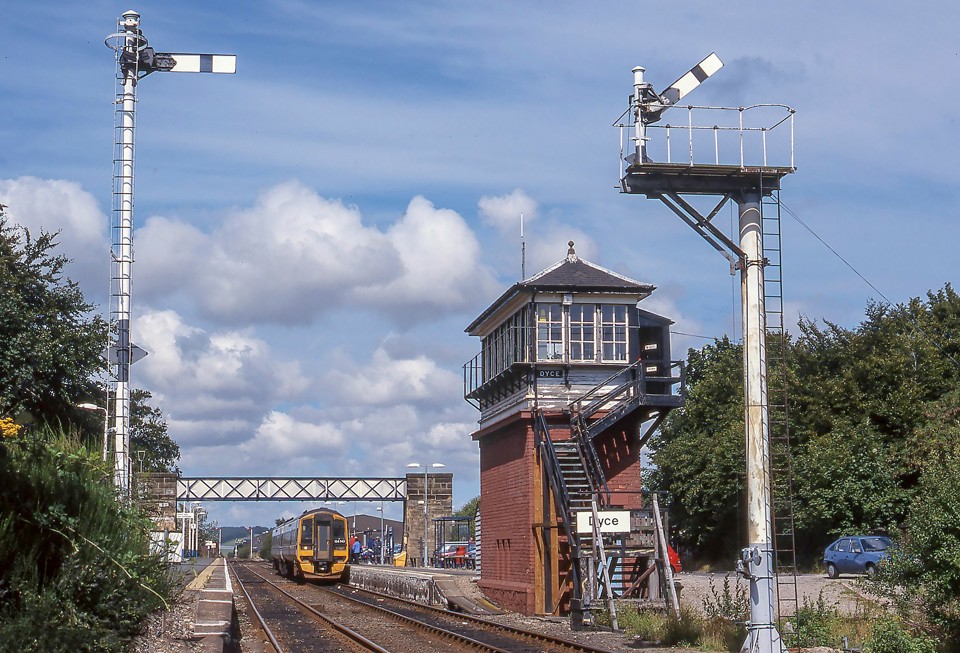
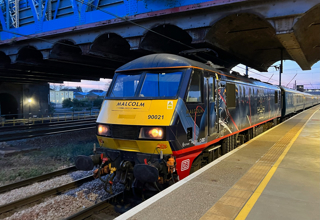
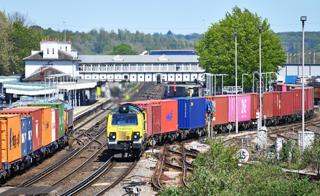
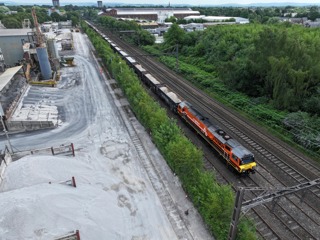
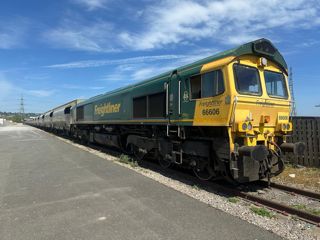
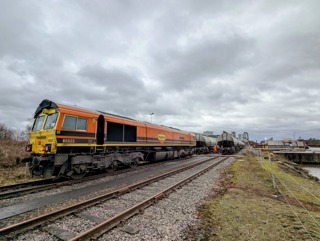










Login to comment
Comments
No comments have been made yet.